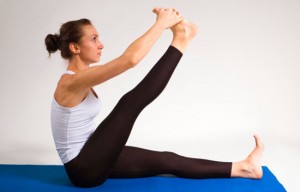
“When, why, what, and how” are the questions patients have been asking physical therapists and others in the sports medicine field for decades. The best answer is “it depends.” It depends on why a muscle is tight. Is it due to injury, lack of activity, too much activity, or pain in other areas of the body?
Let’s discuss why a specific muscle may be tight and lacking flexibility. If a person has excessive pain, muscle tightness can usually be seen in and around this pain area. For example, if a person has low back pain, it is very common to see tightness in the person’s hamstring muscles. This tightness is the result of reflexive tightening. Reflexive tightening and/or shortening occur when there has been an injury to one part of the body. In this instance, it is the low back. Tightness is seen in adjoining areas (the hamstrings). Think of it as the body’s way of protecting itself from further injury. If a person with low back pain has excessive hamstring tightness, it will prevent him/her from bending too far forward, since he/she will feel pain in the low back, as well as tightness in the hamstring.
Muscle tightness can also result from a specific injury to a muscle, such as a muscle strain. This type of injury occurs when the muscle fibers have been excessively stretched or pulled, such as pulling the calf muscle when trying to sprint quickly. Other potential reasons for excessive muscle tightness include weakness to a specific muscle. If a person has weak hamstrings and performs a bridge exercise, he/she may report a muscle spasm in the hamstring. In this instance, the person needs strengthening of the hamstring and gluteus muscles, not stretching.
Diseases or neurological disorders can also cause muscle tightness.
Next week’s discussion will discuss types of stretching.

